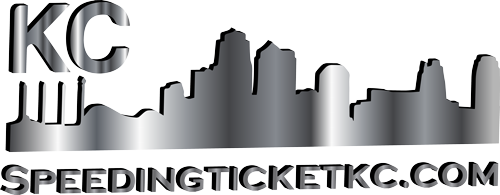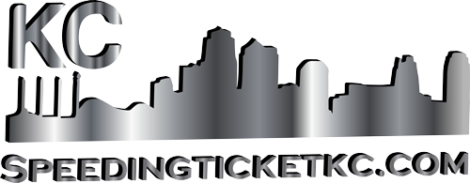What Businesses Should Know About Commercial Auto Insurance – Guest Post

Commercial vehicles transport tools, supplies, and customers; thus, accidents, thefts, and breakdowns affect sales and reputation. Commercial vehicle insurance covers repairs, medical care, and legal help so that daily routes can resume without delay. It covers towing and rental fees while vehicles are under repair, maintaining delivery schedules. Liability restrictions protect a firm’s money when third parties claim accident damage. Without this kind of coverage, one mishap might stop deliveries, use up financial reserves, and cause legal cases that take time away from reaching development goals.
One Policy with All the Core Protections
A conventional commercial auto insurance policy combines liability, collision, and comprehensive coverage into one document. This makes it easier for fleet managers to budget since they only have to remember one renewal date and one premium. Liability clauses compensate for the injuries or damage caused by an accident that was the fault of the driver, including court costs and legal bills, so the firm doesn’t lose any money. Collision sections pay for bodywork, paint, and frame alignment on vans or trucks that hit another vehicle or a fixed object. It prevents businesses from dipping into equipment budgets to cover accident damage. Complete language covers fire, hail, vandalism, and theft. This means that parked units are safe even while their engines are off overnight. Adjusters can rapidly organize repairs and keep routes open for customers who demand on-time service every day, since all three safeguards have the same limitations and deductibles.
Qualifications for Drivers and Safety Programs
Before calculating prices, insurance companies look at motor vehicle reports, licensing courses, and training records. They provide discounts to companies that employ experienced drivers, check endorsements, and perform background checks. Safety talks, dash cam checks, and no-phone driving rules show insurers that the company reduces risk, which lowers renewal rates. Telematics tracks speed, braking, and idle time in real time, allowing managers to plan routes more efficiently. This lowers both fuel expenses and the number of claims. Formal remedial plans deal with infractions quickly, and incentive programs focus on good behavior, which keeps morale high and lowers turnover. Without sacrificing customer service, responsible hiring and ongoing coaching improve underwriting outcomes, reduce delivery delays, and help control insurance costs.
Vehicle Types and Use
Maintenance, load weight, and stopping distance affect the cost of carrying automobiles, light pickups, refrigerated vans, and box trucks. To put each unit in the right class, policy writers need to know the gross vehicle weight, body style, and declared commercial purpose. Accurate declarations provide fair prices and avoid claims from being delayed. Local-radius vehicles cost less than long-haul trucks since they don’t have to drive as many highway kilometers. A designated endorsement is needed for personal usage on the weekends so that errands may still be covered without significantly raising business premiums. Units that are held at construction sites overnight require full limits that equal their replacement value. Heavy trailers that transport dangerous products must have higher liability coverage to follow federal and state laws. When you match coverage specifics to real-world tasks, it makes claims go smoothly and keeps auditors happy during compliance inspections.
Cargo, Equipment, and Extra Options
Standard auto insurance protects the car and other people’s property, but commodities that are being moved or specific tools that are installed may require extra endorsements. Motor truck cargo coverage pays for lost or damaged goods following theft, a crash, or a temperature failure. This maintains customers’ faith and keeps them from having to pay out of pocket. Equipment endorsements that match the real replacement cost safeguard attached lift gates, ladder racks, or refrigeration units. This prevents unexpected expenses when components come from faraway sources. Hired and non-owned vehicle additions safeguard the firm when workers use their cars or hired vans to make deliveries. This expands the protective net without needing separate policies for each employee. Roadside assistance riders pay for towing, jump-starting, and lockout costs. This keeps drivers safe and on schedule when tiny problems happen far from home.
Streamlined Claims and Regulatory Compliance
Quickly submitting a claim saves money since early photos, witness statements, and police reports help adjusters figure out who is at fault and work out repairs before storage and rental prices go up. Many carriers provide smartphone applications that let you input collision facts in minutes, make orders for glass repair, and set up appointments with certified shops that guarantee their service. Managers may keep an eye on progress and divert loads using electronic status notifications, which keeps customers from being too bothered. Commercial vehicle plans also meet the requirements of financial responsibility regulations by showing evidence of insurance to roadside inspectors and client contracts that set certain limitations. Certificates are sent electronically to bidding portals, which speeds up the clearance process for projects and shows a commitment to following the law and keeping the community safe.
Conclusion
Commercial auto insurance is a versatile safety instrument that protects cars, cargo, and financial stability on every road mile. It includes liability, collision, comprehensive, and optional endorsements. Screening drivers correctly, classifying vehicles accurately, adding the right extras, and reporting claims quickly keep premiums fair and fleets productive. This lets companies deliver products, meet customers, and build markets without worrying that one mishap would wipe out all the hard work they’ve done. Regular assessments with trained agents make sure that coverage stays in line with new routes, expanded units, and changing rules. This way, engines remain running and promises to customers stay true year after year.

